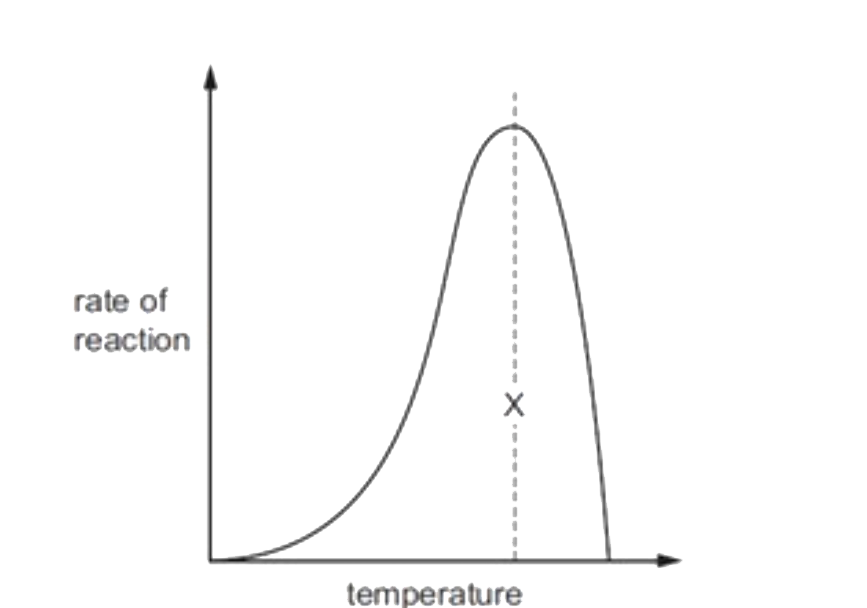The inhibitor which does not resemble the substrate in structure and binds to the enzyme at site other than the active site is called
competitive inhibitor
non-competitive inhibitor
activator
substrate analogue.
The correct Answer is:B
To solve the question, we need to identify the type of inhibitor described. The question states that the inhibitor does not resemble the substrate in structure and binds to the enzyme at a site other than the active site. Let's break down the options and analyze them step by step.
1. Understand the Types of Inhibitors:
- Competitive Inhibitor: This type of inhibitor resembles the substrate and competes with it for binding at the active site of the enzyme.
- Non-Competitive Inhibitor: This type of inhibitor does not compete with the substrate for the active site. Instead, it binds to a different site on the enzyme, which can change the enzyme's shape and function.
- Activator: This is not an inhibitor; rather, it enhances the activity of the enzyme.
- Substrate Analog: This term typically refers to a molecule that mimics the substrate but may not bind at the active site.
2. Analyze the Question:
- The question specifies that the inhibitor does not resemble the substrate in structure. This rules out competitive inhibitors.
- It also states that the inhibitor binds to a site other than the active site, which aligns with the behavior of non-competitive inhibitors.
3. Identify the Correct Answer:
- Since the question describes an inhibitor that binds to a site other than the active site and does not resemble the substrate, the correct answer is non-competitive inhibitor.
Final Answer:
The inhibitor which does not resemble the substrate in structure and binds to the enzyme at a site other than the active site is called a non-competitive inhibitor.
---
- Competitive Inhibitor: This type of inhibitor resembles the substrate and competes with it for binding at the active site of the enzyme.
- Non-Competitive Inhibitor: This type of inhibitor does not compete with the substrate for the active site. Instead, it binds to a different site on the enzyme, which can change the enzyme's shape and function.
- Activator: This is not an inhibitor; rather, it enhances the activity of the enzyme.
- Substrate Analog: This term typically refers to a molecule that mimics the substrate but may not bind at the active site.
- The question specifies that the inhibitor does not resemble the substrate in structure. This rules out competitive inhibitors.
- It also states that the inhibitor binds to a site other than the active site, which aligns with the behavior of non-competitive inhibitors.
- Since the question describes an inhibitor that binds to a site other than the active site and does not resemble the substrate, the correct answer is non-competitive inhibitor.
The inhibitor which does not resemble the substrate in structure and binds to the enzyme at a site other than the active site is called a non-competitive inhibitor.
Topper's Solved these Questions
- BOOK - NCERT FINGERTPS ENGLISHCHAPTER - BIOMOLECULESEXERCISE - Biomolecules137videos
BIOMOLECULES
- BOOK - NCERT FINGERTPS ENGLISHCHAPTER - BIOLOGICAL CLASSIFICATIONEXERCISE - Biological Classification132videos
BIOLOGICAL CLASSIFICATION
- BOOK - NCERT FINGERTPS ENGLISHCHAPTER - BODY FLUIDS AND CIRCULATIONEXERCISE - Body Fluids And Circulation151videos
BODY FLUIDS AND CIRCULATION
Similar Questions
Knowledge Check
- Question 1 - Select One
The inhibitor which closely resembles the substrate in its molecular structure and inhibits the enzyme activity by biniding to the active site of the enzyme is called
Afeedback inhibitorBnon-competitive inhibitorCcompetitive inhibitorDallosteric modulator. - Question 2 - Select One
Some drug do not bind to the enzyme's active site , instead bind to a different site of enzyme . This site is called.
Aallosteric siteBsubstrate siteCionic siteDcompetitve site . - Question 3 - Select One
Which molecule binds to the active site of an enzyme?
ANon-competitive inhibitorBAllosteric inhibitorCAllosteric activatorDSubstrate
Competitive inhibitors of enzymes compete with the active sites of enzyme
View SolutionEnzymes which possess an additional site other than active
View SolutionEnzymes with two sites are called
View SolutionDoes inhibitor alter the structure of enzyme?
View SolutionThe graph shows the effect of temperature on the rate at which the enzyme in a biological washing powder digests and removes fruit juice stains .

Which statements explain the shape of the graph at temperatures higher than X ?
I. Bonds are broken between the R groups of the amino acids in the polypeptide chains of the enzyme.
II. There are more collisions between the enzyme and its substrate.
III. The tertiary structure of the enzyme is altered.
Iv. The shapes of the active site and the substrate are no longer complementary .View Solution

